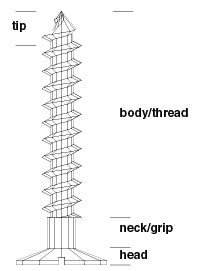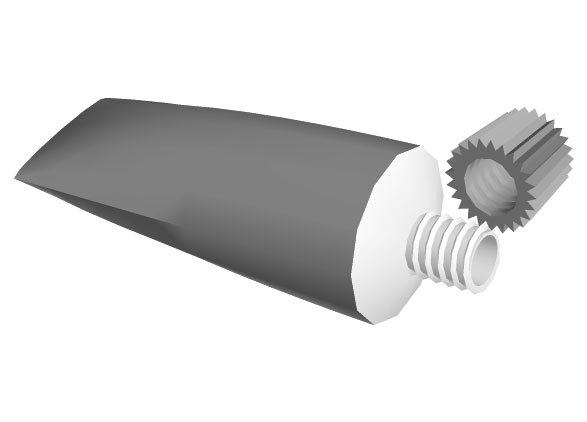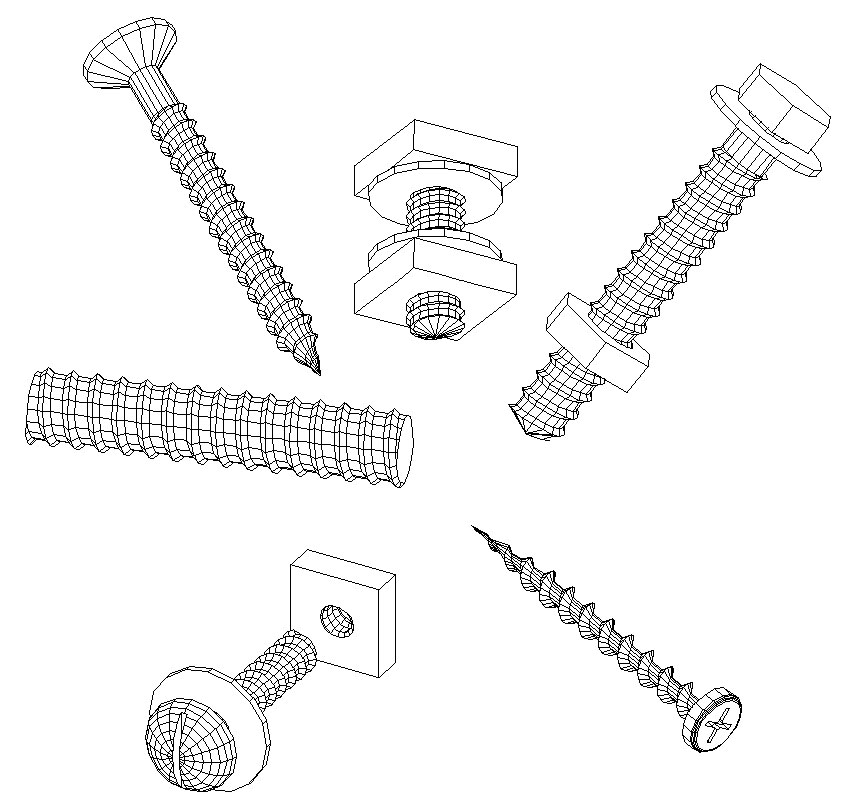Screws and Bolts

The parts of a screw/bolt.

Threads attached to a tooth paste
container and to its cap.

Screws, bolts, and nuts.
The screws and bolts are composite helical objects of revolution. They consist of three parts: the body or thread; the neck or grip; and the head. One end of the screw body may have a tip, where the threads are scaled, resulting in a pointed end. The parts of a screw/bolt are shown on the right.
All screws/bolts must have a body or they can not be generated. The other parts, namely the neck, the head, and the tip, are optional, and may or may not exist. The same algorithm is used for the construction of the threads for both screws and bolts. Whether a screw or a bolt is generated depends on the shape produced by the parameters selected. Screws typically have a tip and a conic head. Bolts typically have flat ends or very short tips, and round heads. Both can have either slotted or Phillips grooves on their heads. Needless to say, there are many other variations of screws and bolts.
Screws that consist of only a body and its threads are useful for attaching to objects such as bottles or other types of containers, after drilling a hole through them, as illustrated on the right. While there is no direct way to generate nuts, they can be easily constructed by differencing (Boolean Difference) the threads of a bolt from an object with the appropriate shape for a nut. Variations of screws, bolts, and nuts are shown on the right.
form•Z offers two tools for generating screws and bolts: the Screw/Bolt and the Detailed Screw/Bolt tool. The former generates faceted objects only, while the latter both smooth and facetted objects. The former are generally quicker to execute, while the latter require more time, due to their more refined details.
